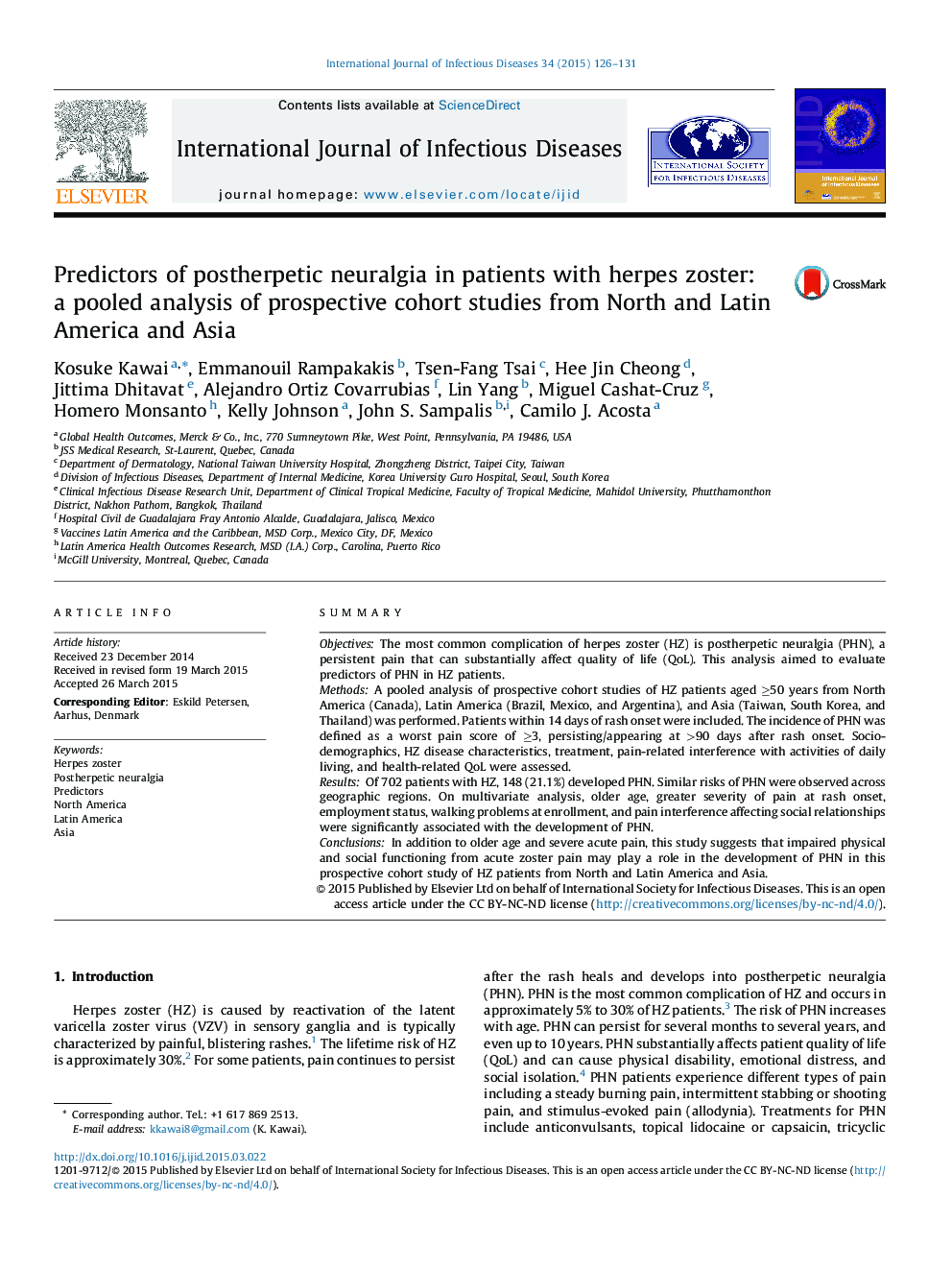| Article ID | Journal | Published Year | Pages | File Type |
|---|---|---|---|---|
| 3362055 | International Journal of Infectious Diseases | 2015 | 6 Pages |
•A pooled analysis of seven prospective cohort studies in North and Latin America and Asia was performed.•Predictors of postherpetic neuralgia (PHN) in herpes zoster were assessed in a real-life setting.•One-fifth (21.1%) of herpes zoster patients developed PHN.•Similar risks of PHN were observed across geographic regions.•PHN predictors were age, severe acute pain, and impaired physical/social functioning.
SummaryObjectivesThe most common complication of herpes zoster (HZ) is postherpetic neuralgia (PHN), a persistent pain that can substantially affect quality of life (QoL). This analysis aimed to evaluate predictors of PHN in HZ patients.MethodsA pooled analysis of prospective cohort studies of HZ patients aged ≥50 years from North America (Canada), Latin America (Brazil, Mexico, and Argentina), and Asia (Taiwan, South Korea, and Thailand) was performed. Patients within 14 days of rash onset were included. The incidence of PHN was defined as a worst pain score of ≥3, persisting/appearing at >90 days after rash onset. Socio-demographics, HZ disease characteristics, treatment, pain-related interference with activities of daily living, and health-related QoL were assessed.ResultsOf 702 patients with HZ, 148 (21.1%) developed PHN. Similar risks of PHN were observed across geographic regions. On multivariate analysis, older age, greater severity of pain at rash onset, employment status, walking problems at enrollment, and pain interference affecting social relationships were significantly associated with the development of PHN.ConclusionsIn addition to older age and severe acute pain, this study suggests that impaired physical and social functioning from acute zoster pain may play a role in the development of PHN in this prospective cohort study of HZ patients from North and Latin America and Asia.
